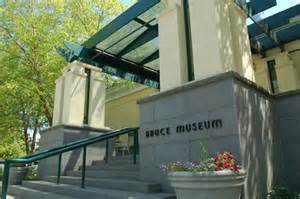Feb 10 2019 - Jun 2 2019
Greenwich, CT
The Silk Road was actually numerous overland and water routes that stretched thousands of miles across China, Central Asia, and Western Europe. In addition to the merchandise that passed along this ancient network of trade routes, artistic and cultural styles were also exchanged among these regions. Chinese Tomb Art reflects those multi-cultural influences.
Fortunes earned through Silk Road commerce allowed Chinese Emperors and nobles to afford lavish tombs furnished with thousands of art objects. Called mingqi or “spirit goods,” the figurines indicated the status of the person on earth and were interred with the deceased for use in the afterlife.
Chinese tomb art gained importance during the powerful Han Dynasty (206 BCE – 220CE) and became central to mortuary customs during the prosperous Tang Dynasty (618CE – 907CE).
Buried Treasures of the Silk Road celebrates the work of anonymous Chinese artists supported by the riches earned on the Silk Road. Highlighting the extraordinary collection of Chinese Tomb Art in the Fred and Jane Brooks Collection of the Bruce Museum, the exhibition will also feature objects and antiquities from the Museum’s permanent collection.
Credit: Exhibition overview from museum website.
Lokapala, Tang Dynasty, 618-906. Sancai glazed pottery, 35½ x 15 x 7 in. Gift of Fred and Jane Brooks. Bruce Museum Collection, 2013.15.01 Photo by Paul Mutino
Exhibition Venues & Dates
Feb 10 2019 - Jun 2 2019
Greenwich, CT

